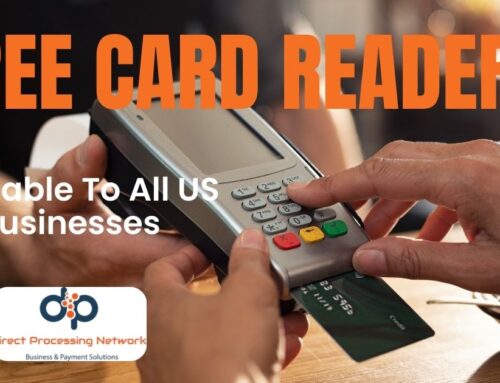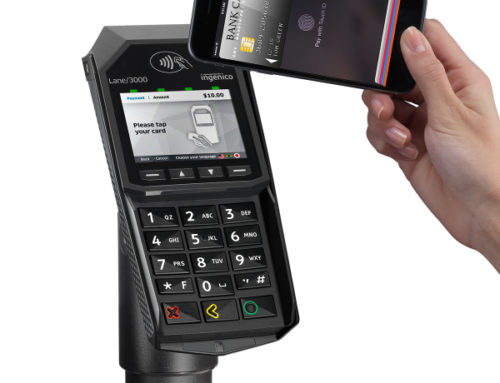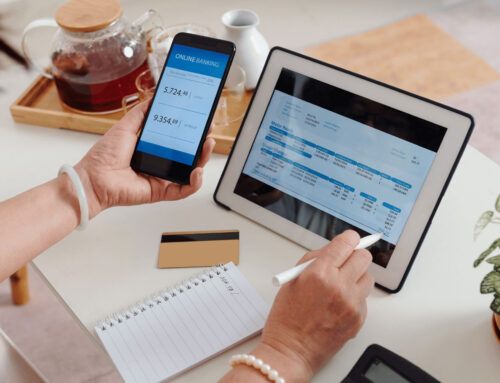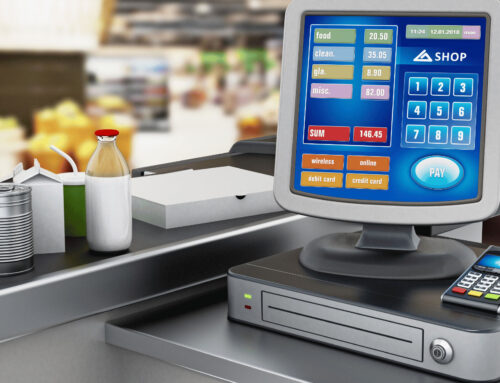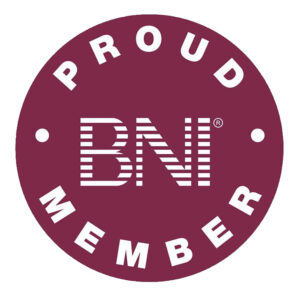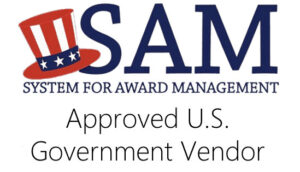An In-depth Journey into the World of Card Readers: Your Ultimate Guide
Understanding the Basics: What is a Card Reader?
A card reader, in its simplest definition, is a device that reads data stored on cards. It's a versatile tool that enables the reading of different types of cards, including credit cards, debit cards, SIM cards, and even memory cards. The breadth of its application is truly astounding, extending across various fields from finance to telecommunications and digital storage.
Card readers utilize diverse technologies to read the information embedded in cards. Depending on the card type, this could be a magnetic stripe, a chip, or digital data stored in a flash memory. Thus, the term "Card Reader" is not tied to a single gadget but is a broad classification that encompasses a range of devices designed to read data stored in different formats on cards.
Tracing the Evolution: The Historical Journey of Card Readers
The genesis of card readers can be traced back to the advent of computers. Punch card readers, one of the earliest forms of card readers, were employed in early computer systems to input data. These punch cards represented information through patterns of holes punched into cardstock. This technology was the precursor to modern card readers, marking the beginning of a transformational journey.
The shift from punch cards to magnetic stripe cards marked a significant milestone in the evolution of card readers. This technology revolutionized the finance sector, giving birth to credit and debit cards. It allowed for secure and quick transactions, laying the foundation for the modern retail economy.
Over the years, magnetic stripe cards evolved into smart cards, introducing a new dimension of security and functionality. They incorporated microprocessors and memory units that could store and process data, reducing the need for external data processing devices.
Now, with the rise of contactless technology and digital wallets, card readers are adapting once again, reflecting the ever-changing landscape of technology and consumer behavior.
Understanding the Different Types of Card Readers
Card readers are not one-size-fits-all. They come in various shapes and sizes, each designed to cater to a specific type of card. To navigate the world of card readers effectively, it's essential to understand the different types that exist. Here's a brief overview:
- Magnetic Stripe Card Readers: These card readers read data stored in the magnetic stripe on the back of cards such as credit and debit cards.
- Smart Card Readers: Also known as chip card readers, they interact with smart cards that have a small microchip embedded into them.
- Memory Card Readers: These readers are designed to access data stored on memory cards used in cameras, phones, and other electronic devices.
- SIM Card Readers: These card readers are used to read SIM cards in mobile devices, allowing users to manage information stored on the SIM card.
- Credit Card Readers: Designed specifically for financial transactions, these readers can process debit and credit cards.
Each of these card readers has its own unique set of applications and benefits, which we'll delve into in the following sections.
A Close Look at Magnetic Stripe Card Readers
Magnetic stripe card readers, commonly known as magstripe readers, are one of the most ubiquitous types of card readers. If you've ever swiped a debit or credit card at a payment terminal, you've used a magnetic stripe card. The reader decodes the information stored in the magnetic stripe on the back of the card, facilitating the transaction.
Despite the advent of newer technologies, magnetic stripe card readers remain widely used due to their cost-effectiveness and simplicity. They are an integral part of payment terminals, ATMs, and access control systems.
Discover the Power of Smart Card Readers
Smart card readers are the more advanced cousins of magnetic stripe card readers. They interact with smart cards, which have an embedded microchip. This chip can process and store data, providing enhanced security and additional functionality compared to magnetic stripe cards.
Smart card readers are utilized in a wide array of applications, from secure financial transactions and access control to identification and data storage. The versatility and advanced security features of smart card readers make them an increasingly popular choice across various industries.
A Deep Dive into Memory Card Readers
In the realm of digital storage, memory card readers hold significant importance. They allow us to access data stored on memory cards, which are used extensively in devices like digital cameras, smartphones, and gaming consoles.
Memory card readers come in various formats to cater to different types of memory cards, such as SD cards, microSD cards, CompactFlash cards, and more. They offer a quick and convenient way to transfer files between devices, making them a staple in digital workflows.
The World of SIM Card Readers
If you've ever changed phones or travelled internationally, you're likely familiar with SIM cards. SIM card readers provide the interface for these small chips, allowing your mobile device to connect to your service provider's network.
Additionally, standalone SIM card readers can be used to manage and backup information stored on the SIM card, such as contacts and text messages. They also play a crucial role in mobile phone repairs and forensic investigations.
Credit Card Readers: A Catalyst for Modern Business
In the age of digital transactions, credit card readers have emerged as essential tools for businesses. They allow merchants to accept card payments, offering customers a convenient and secure payment option.
From traditional countertop card readers to portable mobile card readers and even contactless readers, the world of credit card readers has evolved to keep pace with consumer preferences and technological advancements.
As businesses continue to embrace digital payments, the role of credit card readers will only become more significant.
Dissecting the Technology: How Does a Card Reader Work?
Despite the varied applications, the basic principle behind how a card reader works is the same. They read data stored on the card and transmit it to a computer or processing unit. The method of reading the data, however, depends on the type of card reader and card.
Magnetic stripe card readers read the data encoded in the magnetic stripe on the back of the card. When you swipe the card, the reader decodes the information stored in the stripe's magnetic particles.
Smart card readers, on the other hand, establish a two-way communication with the microchip on the card. They send a command to the chip, which then processes the command and sends back the requested data.
Memory card readers work in a similar fashion to smart card readers. They access the digital data stored in the flash memory of the card and transmit it to the computer.
Decoding the Process: What Happens When You Swipe Your Card?
When you swipe your card at a payment terminal, a series of processes take place in the background to complete the transaction. Here's a simplified breakdown of what happens:
- The card reader reads the data stored on the card.
- This data, which includes the card number and expiration date, is sent to the payment processor.
- The payment processor communicates with the cardholder's bank to verify the availability of funds.
- If the funds are available, the bank approves the transaction.
- The payment processor sends the approval back to the payment terminal, completing the transaction.
This entire process takes place in a matter of seconds, making card transactions a swift and convenient method of payment.
The Link Between Card Readers and Security
Security is a paramount concern when it comes to card transactions. Card readers play a critical role in maintaining the security of these transactions, incorporating various technologies and protocols to ensure the secure transmission of data.
Magnetic stripe card readers, for example, often incorporate encryption to safeguard the card data. Smart card readers take security a step further, utilizing the processing capabilities of the smart card's chip to implement advanced security measures like PIN verification and cryptographic algorithms.
Despite these security measures, card readers and card transactions are not impervious to threats. Skimming and data breaches are significant concerns that both card issuers and card reader manufacturers continually strive to address.
Modern Card Reader Technologies: EMV and NFC
The world of card readers is not static; it continually evolves to incorporate new technologies. EMV and NFC are two such technologies that have revolutionized the way card readers work.
EMV (Europay, Mastercard, and Visa) is a global standard for credit and debit payment cards based on chip card technology. EMV cards are smart cards that store their data on integrated circuits rather than magnetic stripes. EMV card readers offer enhanced security features, significantly reducing the risk of card fraud.
NFC (Near Field Communication) has enabled the rise of contactless card readers. These readers can communicate with cards or devices like smartphones and smartwatches over short distances. NFC card readers offer a quick, convenient, and secure method for card transactions, driving the adoption of contactless payments.
How to Choose the Right Card Reader for Your Business
Choosing the right card reader for your business is not a decision to be taken lightly. The right card reader can streamline your operations, improve customer satisfaction, and even boost sales. Here are some factors to consider:
- Type of Transactions: Do you need a card reader for in-store transactions, online transactions, or both? The type of transactions you process will determine the type of card reader you need.
- Payment Methods: What payment methods do you want to accept? Some card readers can only process magnetic stripe cards, while others can process both chip cards and contactless payments.
- Cost: Card readers come at various price points, and there may also be additional costs like transaction fees to consider. Balance the cost against the benefits the card reader provides.
- Integration: How well does the card reader integrate with your existing systems? Look for a card reader that seamlessly integrates with your POS system, accounting software, and other business tools.
- Security: The security features of the card reader are paramount. Ensure the card reader complies with security standards like PCI DSS and supports encryption and other security measures.
With these factors in mind, you can find a card reader that fits your business needs and budget.
Maintenance and Troubleshooting Tips for Card Readers
Just like any piece of technology, card readers need regular maintenance to perform at their best. Here are some maintenance and troubleshooting tips:
- Keep it Clean: Regular cleaning can prevent a lot of common card reader issues. Use a card reader cleaning card or a soft cloth to clean the card slot. Avoid using harsh chemicals, which can damage the reader.
- Check the Connections: If your card reader is not working, the first thing to check is the connections. Ensure the reader is properly connected to the power source and the computer or payment terminal.
- Update the Software: Keep the card reader's software or firmware up-to-date. Updates often include bug fixes and improvements that can resolve issues.
- Contact Customer Support: If you're unable to resolve the issue yourself, don't hesitate to contact the card reader manufacturer's customer support. They can provide expert guidance and assistance.
Card Reader and Its Role in E-commerce
E-commerce has transformed the way we shop, and card readers have been a pivotal part of this transformation. In the realm of e-commerce, card readers take the form of payment gateways, which securely transmit card data from the online store to the payment processor.
These virtual card readers perform a similar function to their physical counterparts but in the digital space. They enable online businesses to accept card payments, facilitating easy and secure transactions for online shoppers.
As e-commerce continues to grow, the role of card readers in this digital shopping revolution becomes ever more significant.
The Impact of Card Readers on Consumer Behaviour
Card readers have had a profound impact on consumer behavior. By enabling card payments, they have made shopping more convenient and secure, influencing consumers' payment preferences and shopping habits.
Studies show that consumers tend to spend more when paying with cards compared to cash. This "plastic effect" is a boon for businesses, encouraging higher spending and boosting sales.
Moreover, with the rise of contactless payments and mobile wallets, card readers are shaping the future of consumer behavior. As transactions become increasingly digital, consumers are gravitating towards faster and more convenient payment methods, with contactless payments leading the charge.
The Role of Card Readers in Data Transfer
Aside from financial transactions, card readers play a significant role in data transfer. Memory card readers, in particular, are essential tools for transferring data between devices.
Whether you're a photographer transferring photos from your camera to your computer, a gamer moving game data between consoles, or just a regular user backing up your smartphone data, you've likely used a memory card reader.
As the amount of digital data we generate continues to grow, the role of card readers in managing and transferring this data becomes increasingly crucial.
Accessibility and Card Readers: Aiding the Disabled
Card readers play an essential role in making technology accessible to people with disabilities. Many modern card readers are designed with accessibility features that make them easier to use for people with visual, auditory, or motor impairments.
For example, card readers with tactile keypads, voice prompts, or adjustable display contrast can significantly enhance the usability of the device for disabled individuals. As we strive for a more inclusive society, the role of card readers and other assistive technologies in breaking down barriers cannot be overstated.
The Future of Card Readers: Trends to Watch
The card reader industry is dynamic, shaped by technological advancements and evolving consumer expectations. Here are some trends to watch in the future of card readers:
- Contactless Payments: The trend towards contactless payments is set to continue, driven by the convenience and speed of these transactions. Expect to see more NFC-enabled card readers and mobile wallets in the future.
- Biometric Authentication: Biometric authentication methods like fingerprint scanning and facial recognition are becoming more common in payment technologies. These methods offer enhanced security and could become a standard feature in future card readers.
- Integration with IoT: As the Internet of Things (IoT) grows, we can expect card readers to become more interconnected, integrating with other IoT devices for seamless transactions and improved customer experiences.
- AI and Machine Learning: Artificial intelligence and machine learning technologies have the potential to transform card readers, enabling advanced features like fraud detection and personalized customer interactions.
The future of card readers is promising, with plenty of opportunities for innovation and growth.
FAQs
What is a card reader? A card reader is a device that can read data from a card, such as a credit card, debit card, or memory card. They're used in a variety of applications, from financial transactions to data transfer.
How does a card reader work? A card reader works by reading the data stored on the card and transmitting it to a computer or processing unit. The method of reading the data depends on the type of card reader and card.
What are the different types of card readers? There are several types of card readers, including magnetic stripe card readers, smart card readers, and memory card readers. Each type of card reader is designed to read a specific type of card.
What is a smart card reader? A smart card reader is a device that can read and write data to a smart card. Unlike magnetic stripe cards, smart cards have a microchip that can process data, enabling more secure and complex functions.
What is an EMV card reader? An EMV card reader is a card reader that can process EMV cards. EMV (Europay, Mastercard, and Visa) is a global standard for credit and debit payment cards based on chip card technology. EMV cards and readers offer enhanced security features, significantly reducing the risk of card fraud.
What is a contactless card reader? A contactless card reader is a card reader that uses NFC (Near Field Communication) technology to read cards or devices without physical contact. Contactless card readers offer a quick, convenient, and secure method for card transactions.
Conclusion
Card readers play a pivotal role in our digital society, facilitating secure and convenient transactions in a myriad of applications. From the familiar swipe of a credit card to the swift tap of a contactless payment, card readers underpin our daily commerce and data management.
As technology continues to evolve, card readers are poised to keep pace, integrating new technologies and features to meet the changing demands of businesses and consumers. Whether it's embracing contactless payments, enhancing security measures, or supporting more inclusive design, the future of card readers is both dynamic and promising.



